Chinese Is Easy – 5 Reasons Why Learning Chinese Is Not As Hard As You Think
Many people seem to think that Chinese is the most difficult language in the world. “C’est du chinois” say the French, when referring to something completely incomprehensible.
There is of course no such thing as the most difficult language in the world. Many factors need to be taken into consideration and it all depends on what your mother tongue is and what other languages you have already mastered. Learning French is easier for Spanish or Italian native speakers than it is for Germans, whereas learning Dutch or Norwegian would be easier for a German than for a Spaniard
So, is Chinese a difficult language for westerners to learn? Yes and no. In this article, we will have a closer look at the Chinese language to understand where it’s hard and where it’s actually surprisingly easy! In the end, you’ll see that Chinese is not as hard as you think.
- 1. From characters to pinyin
- 2. Chinese tones: are singing skills required?
- 3. Chinese grammar: a gift from Heaven!
- 4. Chinese vocabulary: makes sense!
- 5. Chinese characters: actually more phonetic than you think!
- Conclusion: Learning Chinese? Yes you can!
1. From characters to pinyin
At first, looking at the picture below, one may feel very discouraged and give up all hope of learning Chinese right away…
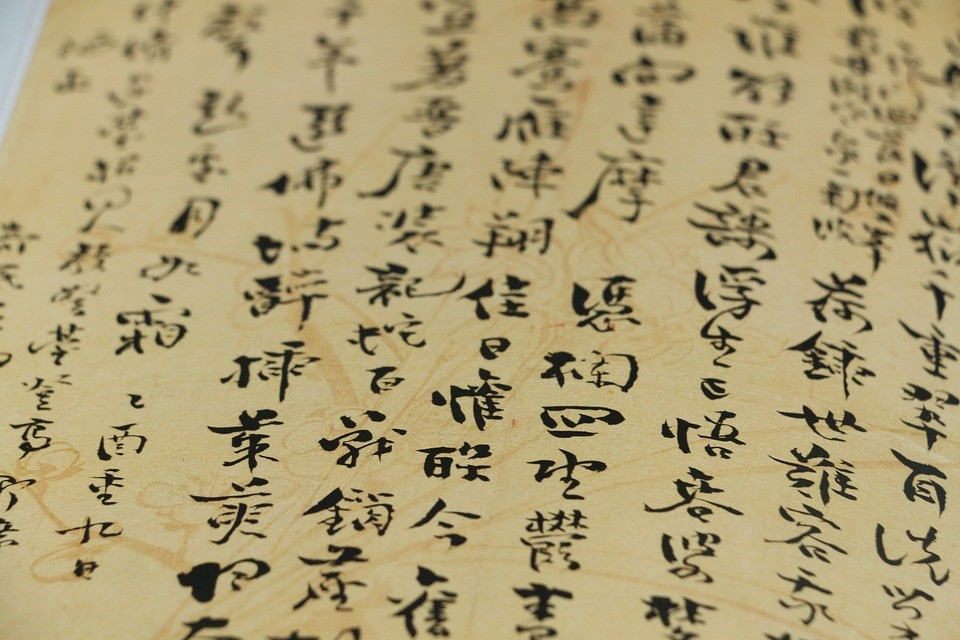
Not being able to read anything at first, scares many people off and is precisely the reason why Chinese has the aura of being an “impossible” language to learn. For westerners, a completely unknown but alphabetical language would seem much more familiar at first.
So, let’s convert those mysterious Chinese characters first into an alphabetical form much easier to read: “pinyin”. Pinyin is fully phonetic and can be learned very quickly since there are only about 400 different syllables in the Chinese languages, compared to thousands in Western languages.
Pinyin is fully phonetic and can be learned quickly, since there are only about 400 different syllables in Chinese [ Tweet this]

2. Chinese tones: are singing skills required?
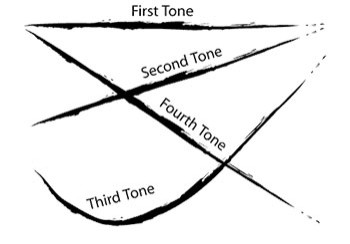
Because the Chinese language has so few different syllables, tones are being used. In Mandarin, the official standard language, there are 4 different tones, as well as a neutral tone, which is however only used very rarely. The 4 tones allow pronouncing the syllables in different ways, so that different meanings can be conveyed.
Learning to hear and pronounce these tones correctly is a challenge for anybody who´s never learned a tonal language before. Yet, its importance should not be overstated either. Usually, up to an intermediate level, it will be perfectly clear which meaning is intended, even if you pronounce or hear a tone incorrectly.
How you can deduct meaning without tones:
- The context of the conversation
- The grammatical position in the sentence
- The fact that many Chinese words are duo-syllabic, reducing the potential confusion
- mā usually means “mother”, but in spoken language the Chinese will usually say “māma” or “wŏ mā” (My mother) or “nĭ mā” (your mother) .
- má could mean “hemp” (plant), but the only common usage in spoken language would be “dàmá”, literally “big-hemp” referring to marihuana
- mă usually means horse
- mà usually means “to scold, to insult” and is a verb, meaning it will be preceded by a subject and followed by an object.
Now, imagine you intend to say “mother” but you pronounce it as “horse”. Would the context not make it perfectly clear who you are referring to? One can only hope so! If not, you may be having some other far more serious issues in the communication.
Or, imagine you intend to say “marihuana” (big hemp) to your local dealer but you pronounce it as “big horse”. Surely, your dealer will have to be pretty stoned not to understand what you mean!
If you mispronounce the forth tone in the verb “to scold”, it can´t be mistaken for any of the other 3 meanings, because none of those are verbs so they can´t have that position in the sentence. You can say “I insult you”, but saying “I mother you” or “I hemp you” or “I horse you” all make little sense, unless this is slang you use in some kind of obscure subculture you belong to.
However, just beware that even though you don´t need to know characters to be able to pronounce Chinese, this does not mean that characters are a useless invention by the Chinese.
The reason why the Chinese invented characters is basically because they have a very large amount of “homonyms”, which are words with the same pronunciation but different meaning. Inventing a character script was a pure necessity to distinguish them, because an alphabetical system is simply too limited to do that.
We’ll have a closer look at Chinese characters further down in the article. But first, let’s have a closer look at Chinese grammar and Chinese vocabulary.
3. Chinese grammar: a gift from Heaven
For anybody who has bad memories of learning French or Spanish regular and irregular verb conjugations, or German article declinations in Nominativ, Akkusatif, Genitif or Datif, or learning plurals of nouns in French, or trying to memorize if words are masculine, feminine or neuter, look no further, the Chinese language is completely devoid of all those complications of Western languages.
In Chinese, forms never change, because the pronunciation of a character is fixed. The sound of a character will never change in function of the person, tense, number, gender of words.
Chinese grammar can therefore be simply summarized as follows:
- No conjugations: each verb only has one form, and for that matter: no irregular verbs
- No tenses: use of particles to express if an action takes place in the past, present or future. Again, the verb form never changes in function of the tense
- No articles: no such thing as ‘the’ and ‘a’, no le/la, no der/die/das
- No plurals: quantifiers before the noun, or simply the context, will make clear whether we are talking in singular or in plural
- No gender: no masculine, feminine or neuter words
- No cases: since articles don´t exist, and nouns can´t be changed anyway, it´s impossible to have akkusativ/genetiv/dativ in Chinese
- No declinations of adjectives by number or gender: just like nouns, adjectives never change
- Fixed sentence patterns, no inversion: fixed pattern of subject – verb – object
Chinese grammar: a gift from heaven! No conjugations: each verb only has one form, and for that matter: no irregular verbs [Tweet this]
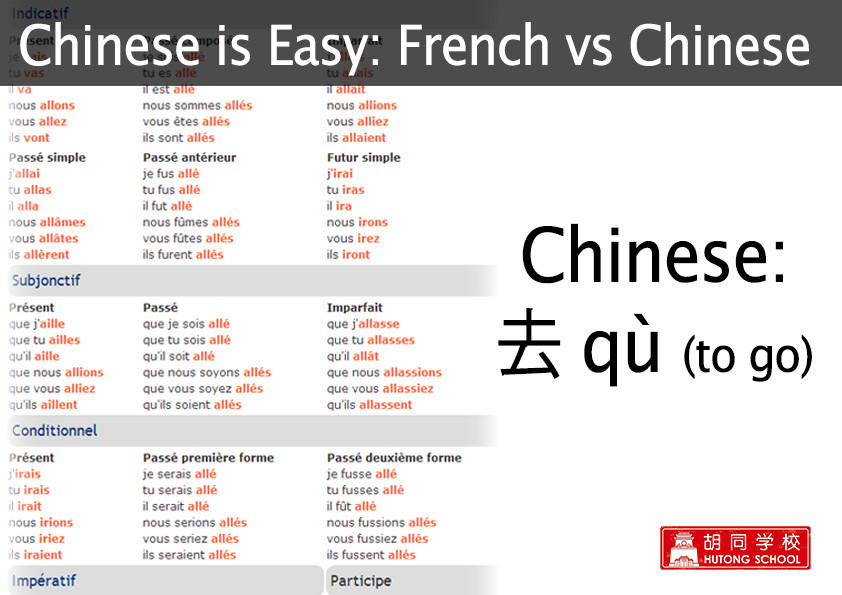
This will save you quite some time, don’t you think? Not to mention that you won’t be able to make any more mistakes against all those grammatical rules of Western languages!
4. Chinese vocabulary: makes sense!
In general, Chinese vocabulary is built up in a very logical way. Once you know some basic words, your learning process will speed up in no time. As you progress, you will notice that many new words you learn are simply creative combinations of other basic words you have learned before.
How about you guess the meaning of the words below:
- 电脑 diàn-năo = Electricity + brain = ?
- 电话 diàn-huà = Electricity + speech = ?
- 电视 diàn-shì = Electricity + to view = ?
- 变色龙 biàn-sè-lóng =Change + colour + dragon = ?
- 长颈鹿 cháng-jĭng-lù = Long + neck + deer = ?
- 猫头鹰 māo-tóu-yīng = Cat + head + hawk = ?
(Answers: computer, telephone, television, chameleon, giraffe, owl)
All of the above words are examples of how the Chinese use known concepts of single characters to form new words.
Chinese vocabulary makes sense! 电脑 diàn-năo = electricity + brain = computer [Tweet this]
As you can see, the Chinese language constructs new words by combining very basic meanings of existing characters, which are usually more than 2000 years old themselves, as we will discuss in the next section. In Western languages, words often stand much more by themselves, since the alphabet also allows many more letter combinations (syllables) than is possible in Chinese.
5. Chinese characters: actually more phonetic than you think!
Learning how to read Chinese characters is not an absolute must from the very beginning. However, at some point, not being able to read characters will hamper your progress because you won´t be able to read any Chinese documents or signs on the street.
At first sight, Chinese characters may seem like a huge collection of all kinds of random scribbles that bear no resemblance to any object, don´t convey any obvious ideas and certainly don´t have any phonetic elements in them. Yet, Chinese characters actually have all of the above in them.
Broadly speaking, we can distinguish 3 main types of characters:
- Pictograms
- Ideograms
- Radical-phonetic compounds
Let's understand what each type refers to:
1. Pictograms: stylized representation of objects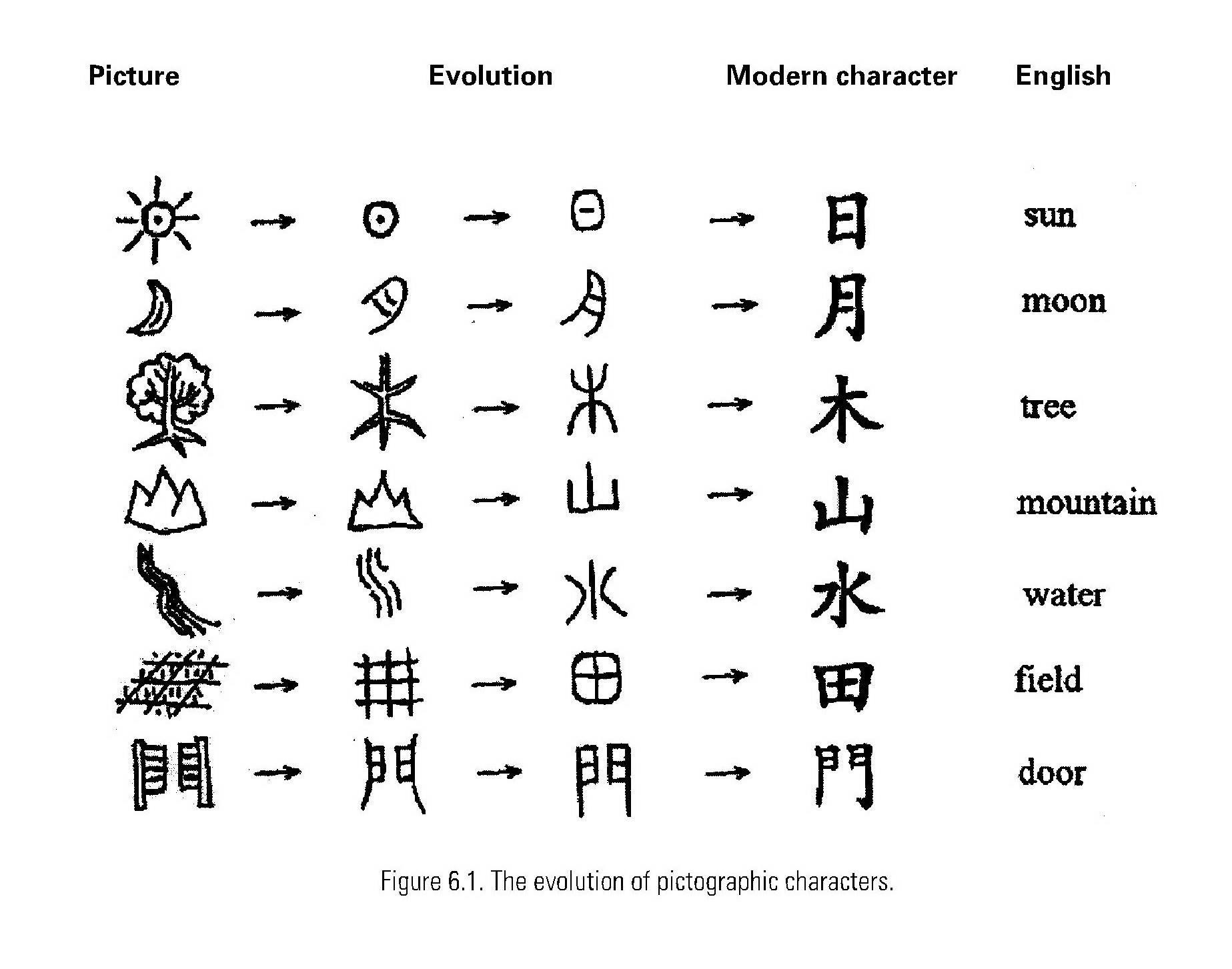
As the above examples show, the oldest version of the character (on the left) was indeed just a drawing of the object. Over the years (towards the right), the form became more polished, but the original object can still be traced back.
2. Ideograms: expressing abstract ideas through form
As for ideograms, the meaning is always abstract, hence, it was impossible to make an actual drawing. However, indicating for example the upper or lower part of a tree, was used to convey more abstract notions such as “top” or “root”. Those meanings were then later expanded, so that “root of the tree” could also mean “basis” or “original”, and “top of the tree” could also mean the “end” of something.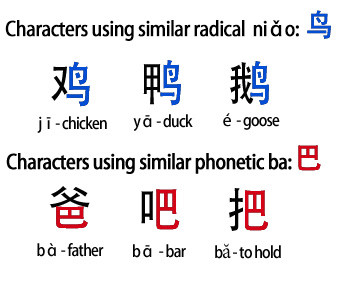
3. Radical-phonetic compounds (80-90% of characters)
Radical: element that indicates meaning (about 200)
Phonetic: element that indicates the pronunciation
Picture below indicates how the radical already gives you an idea of the meaning of that character. The phonetic element is usually a character in itself as well, which has a pronunciation very similar to the pronunciation of the new combination.
Conclusion: Learning Chinese? Yes you can!
So, let’s put it all together now:
- Characters can be written phonetically at first
- Tones exist and matter, but are no insurmountable obstacle
- Grammar is so simplified that it´s a gift from heaven
- Vocabulary is full of creative combinations that just make sense
- The majority of characters are actually phonetic making reading easier than you think
Is Chinese the most difficult language in the world? Only if you want it to be!
The best way to learn any new language is to throw aside all your fears, excuses and imaginary obstacles and just get started. You won’t be able to learn a language like you learned your first one as a child, but don’t worry, there are enough brain cells left to add a few other languages into your brain.
The best way to learn any new language is to throw aside all your fears, excuses and imaginary obstacles and just get started [Tweet this]
Sure you’ll make a lot of mistakes in the beginning and you’ll never be a native speaker. But don’t be afraid of that, because your efforts will be rewarded by a whole new world opening up to you, a world that is thousands of years old and has more than 1,3 billion humans living in it today! Now that we’ve (hopefully) convinced you that Chinese grammar is easy, have a look at these 10 free resources to help you get your head around Chinese grammar.
好好学习,天天向上。
Hǎo hǎo xuéxí, tiāntiān xiàngshàng.
(Literally: good good study practice, day day towards up)
By studying well, you’ll make progress every day.
by Haike Bruneel
